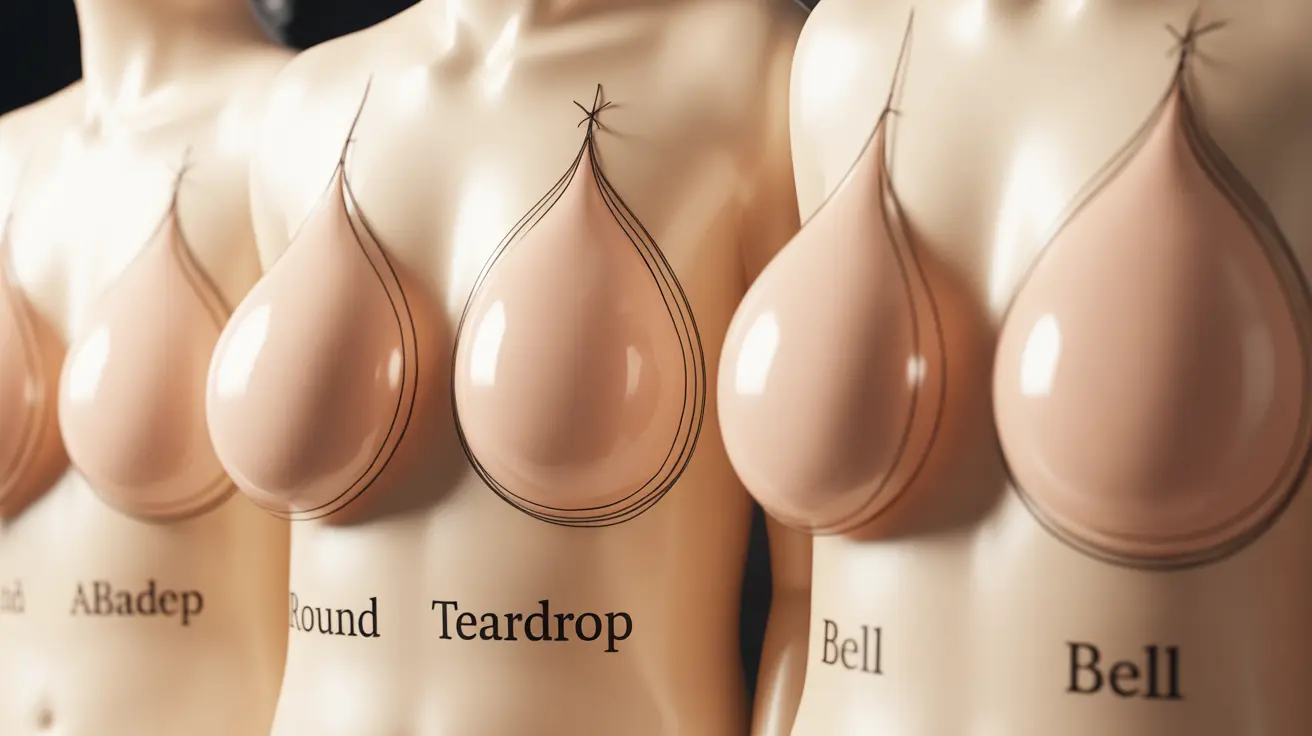Every person's body is unique, and this includes breast shape and size. Understanding the various types of breast shapes is not only important for self-awareness but also crucial for finding properly fitting bras and maintaining breast health. This guide will help you understand the diversity of breast shapes and provide practical advice for finding the right supportive garments.
Common Breast Shapes and Their Characteristics
Breast shapes vary widely among individuals, with several distinct categories being most common. Understanding these variations can help you better appreciate natural diversity and find the most comfortable and supportive undergarments.
Round Shape
Round breasts maintain a full, symmetrical appearance with equal fullness both above and below the nipple line. This shape is often considered the most common and typically provides balanced volume throughout the breast tissue.
Teardrop Shape
Teardrop-shaped breasts are similar to round breasts but have slightly less fullness at the top. They gradually become fuller at the bottom, creating a natural slope. This shape is very common and is often seen in breasts of various sizes.
Bell Shape
Bell-shaped breasts are characterized by a slimmer appearance at the top and more fullness at the bottom. They typically have a longer line from base to nipple compared to other shapes and may require additional support from well-structured bras.
Factors Influencing Breast Shape
Genetic Factors
Genetics plays a significant role in determining breast shape and size. Your genetic makeup influences tissue distribution, density, and overall breast structure, which contribute to your unique breast shape.
Age and Life Changes
Breast shape naturally changes throughout life due to various factors including:
- Hormonal fluctuations
- Pregnancy and breastfeeding
- Weight changes
- Aging process
- Exercise and muscle development
Finding the Right Bra for Your Shape
Different breast shapes require different types of support and bra styles. Understanding your breast shape can help you make better choices when selecting undergarments:
- Round shapes often work well with most bra styles
- Teardrop shapes benefit from balconette and demi-cup styles
- Bell shapes typically need full-coverage bras with good support
- Asymmetrical shapes may require specific padding or adjustable cups
Normal Variations and Health Considerations
It's important to understand that breast asymmetry and shape variations are entirely normal. Most people have some degree of difference between their breasts, and this usually doesn't indicate any health concerns. However, sudden changes in breast shape or size should be discussed with a healthcare provider.
Frequently Asked Questions
What are the most common types of breast shapes and how do they affect bra fitting?
The most common breast shapes include round, teardrop, and bell shapes. Each shape requires different types of support and bra styles. Round shapes are versatile and work with most bra styles, while bell shapes typically need more structured support with full-coverage cups.
How do genetic and lifestyle factors influence breast shape and size?
Genetics primarily determines breast shape and size, while lifestyle factors like weight changes, exercise, and aging can modify them. Hormonal changes during pregnancy, menstruation, and menopause can also affect breast appearance.
What are the differences between round, bell-shaped, and teardrop breast types?
Round breasts have equal fullness above and below the nipple line. Teardrop breasts have slightly less fullness on top with gradual fullness below. Bell-shaped breasts are slimmer at the top with more pronounced fullness at the bottom.
How can I determine my breast shape and what are the best bra styles for it?
You can determine your breast shape by observing the distribution of tissue and comparing it to common shape profiles. The best bra style depends on your specific shape - for example, bell shapes need full-coverage bras, while teardrop shapes often work well with balconette styles.
Are there any health implications or risks associated with having asymmetrical or differently shaped breasts?
Breast asymmetry and shape variations are typically normal and don't indicate health problems. However, sudden changes in shape, size, or appearance should be evaluated by a healthcare provider to rule out any underlying conditions.




